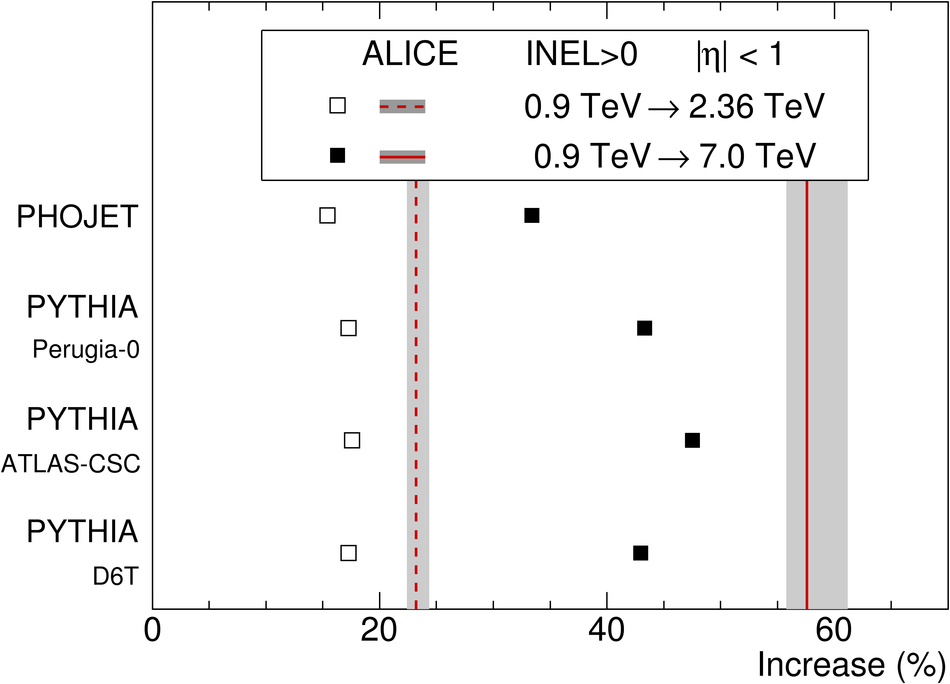The pseudorapidity density and multiplicity distribution of charged particles produced in proton-proton collisions at the LHC, at a centre-of-mass energy $\sqrt{s} = 7~$TeV
were measured in the central pseudorapidity region |$\eta$| < 1. Comparisons are made with previous measurements at sqrt(s) = 0.9 TeV and 2.36 TeV. At sqrt(s) = 7 TeV, for events with at least one charged particle in |$\eta$| < 1, we obtain d$N_{\rm ch}$/d$\eta$ = 6.01 +- 0.01 (stat.) +0.20 -0.12 (syst.). This corresponds to an increase of 57.6% +- 0.4% (stat.) +3.6 -1.8% (syst.) relative to collisions at 0.9 TeV, significantly higher than calculations from commonly used models. The multiplicity distribution at 7 TeV is described fairly well by the negative binomial distribution.
Eur. Phys. J. C 68 (2010) 345-354
HEP Data
e-Print: arXiv:1004.3514 | PDF | inSPIRE
CERN Record




